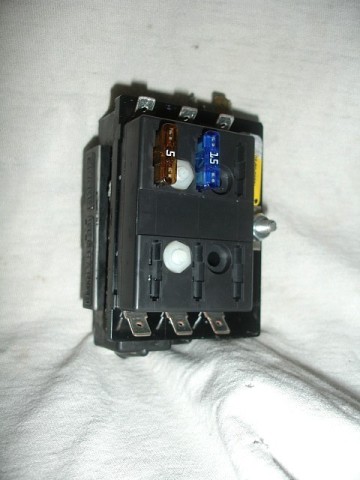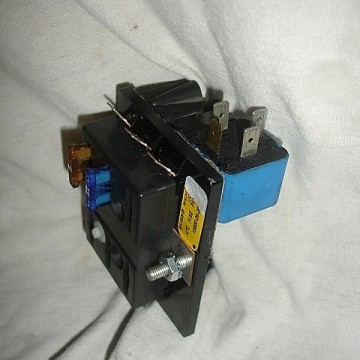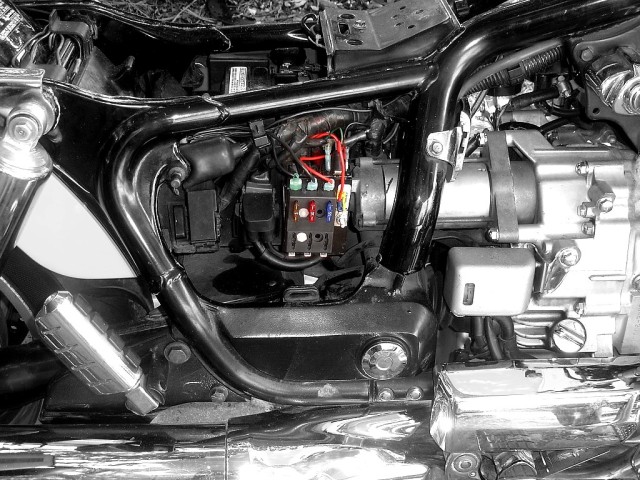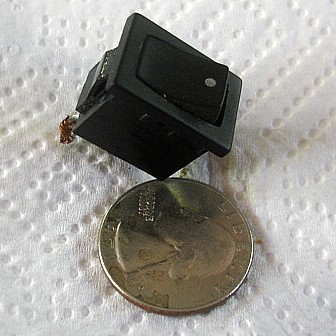While trying to put my crapatorium in some kind of order, I was sidetracked by a pair of small running lights bro Curtis (mrider) had given me, a while back. A little tinkering demystified their workings and a couple of H3 bulbs later they were beaming like they'd just won First Prize for something.

So, I had two perfectly good running lights that I had no plan to use. However, there's been a time or two when I'd wished I'd had better illumination to my right so I bent a bracket from scrap aluminum and prepared to wire up one of the lights with wire salvaged from a heavy-duty extension cord.
Since the wire was no smaller than 20 ga I intended to connect directly to the battery; the only thing I needed was a toggle switch.
But, seeing as how running lights in the saddlebags got power from wiring harness aux circuit, and the Stebel air horn was tied in to the fusible link; I reckoned that this was as good a time as any to do a little housekeeping. An auxiliary fuse block would neaten things up nicely. I put the light on hold.

I read a few discussions on VTX and Valkyrie owner’s websites on the subject, then headed into town for parts. At Auto Zone I picked up a six post fuse block for under $10 and Radio Shack sold me a 30A automotive power relay for just over $6.
The relay was to be wired into the bike’s aux circuit so the new fuse block would not energize without the ignition switch being in the "On" position.
Note that the wire from the battery to the relay incorporates a 30 amp fuse in an in-line holder.
I glued the relay onto the back of the fuse block with 3M Emblem and Trim Adhesive. My intention was to affix the fuse block to the fusible link cover with industrial strength "velcro"; I'd forgotten that there is danged little that will adhere to ABS plastic.
My solution was to drill the cover and run nylon screws from the inside, through the mounting holes in the fuse block.

The nylon nuts sucked down into the dimples on the fuse block like it was custom crafted.


The rear running lights were put on a post, freeing up the aux circuit to operate the relay.
I was able to move the horn relay to the front if the battery box (under the seat) and grounded it to a frame tab that mounts the battery box. The old positive, including an in-line fuse holder, was removed from the fusible link and a new one attached to the aux fuse block.


Now, about that running light: I ran the wires under the fuel tank, grounding at a frame tab that secures the air box. The hot wire was to run to a toggle switch that I hoped to mount inconspicuously on the left side, without drilling anything.
That hope was dashed. After mulling the problem over several cups of coffee I realized that there is lots of space in, and on, the saddlebags.
I abandoned the snazzy toggle switch I'd purchased in town and went with a very small one salvaged from a floor fan.

A small square hole was cut with my trusty Dremel tool and, zip-pop, installation. The wires run through the same hole as the ones for the turn signals. The switch is inconspicuous and accessible but it's final test will come when the Sexy Granny packs for a ride.

Bench testing complete, I'm ready for the field.